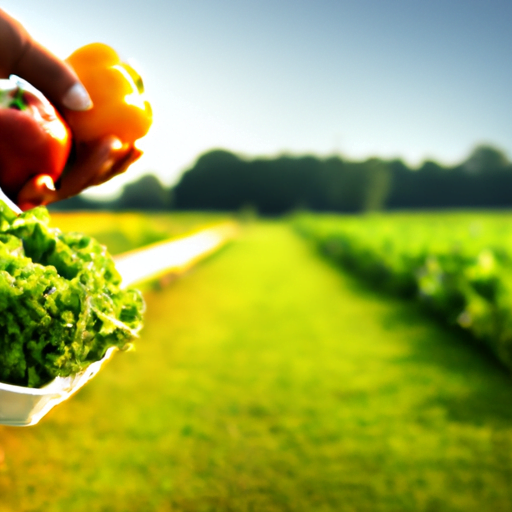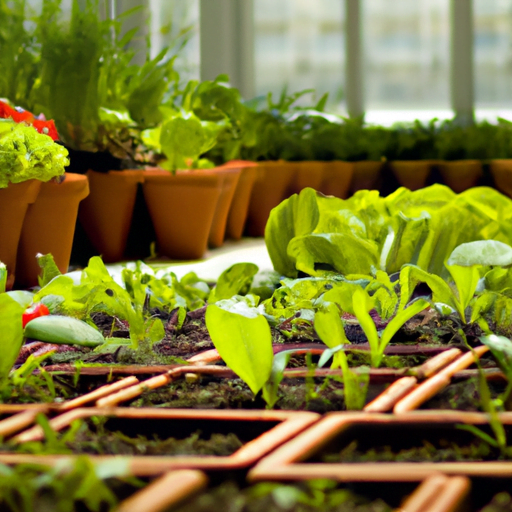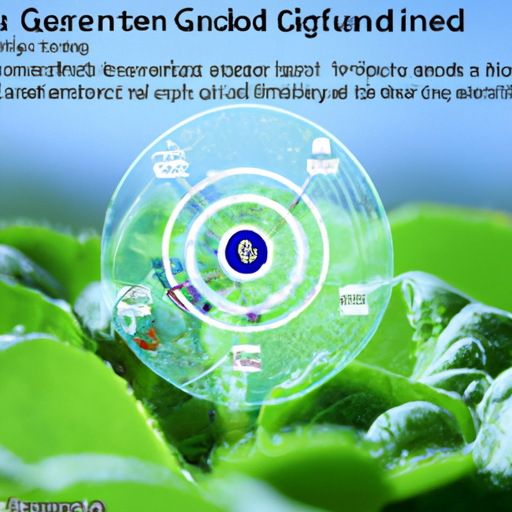Have you ever wondered how fast you can grow your own food off the grid? Living off the grid is becoming increasingly popular as people seek a more sustainable and self-sufficient lifestyle. And one of the key aspects of living off grid is growing your own food. But how fast can you actually grow your own food? In this article, we will explore the speed of food production off the grid and discover the fastest food you can grow.
Growing your own food off the grid allows you to have complete control over the entire process, from seed to harvest. Without relying on supermarkets or transportation, you can ensure that your food is fresh and free from harmful chemicals. But how fast can you actually have homegrown food on your table? The speed of food production off the grid can vary depending on a variety of factors, such as the type of crop, growing conditions, and your level of experience.
Different fruits and vegetables have different growth rates, with some being faster than others. Lettuce, for example, is one of the fastest-growing crops and can be ready to harvest in as little as 4 weeks. On the other hand, crops like tomatoes and peppers can take 8-12 weeks to mature. Additionally, factors such as the climate, soil quality, and proper care and maintenance can greatly influence the speed of food production off the grid. So, if you’re looking to grow your own fast food off the grid, stay tuned to learn more in the upcoming article.

Living off grid
Living off grid refers to the practice of living independently without relying on public utilities such as electricity, water, or natural gas. Instead, individuals or communities choose to generate their own power, collect rainwater, and implement sustainable living practices. This lifestyle has gained popularity in recent years due to its potential for self-sufficiency and reduced environmental impact.
Benefits of living off grid
Living off grid offers a range of benefits. First and foremost, it allows individuals to have greater control over their own resources, reducing dependence on external sources. By generating their own electricity through solar panels or wind turbines, off grid dwellers are not subject to power outages or utility bills. Additionally, collecting rainwater and implementing water conservation methods ensures a sustainable water supply even in periods of drought.
Another advantage is the reduced ecological footprint. By relying on renewable energy sources and implementing sustainable practices, off grid living minimizes the impact on the environment. This includes reducing carbon emissions, conserving water, and using resources more efficiently.
Furthermore, living off grid promotes a simpler and more self-reliant lifestyle. It encourages individuals to rely on their own skills, adaptability, and resourcefulness. This self-sufficiency can instill a sense of satisfaction and independence. Moreover, off grid living often involves being surrounded by natural beauty and tranquility, away from the hustle and bustle of urban life.
Challenges of living off grid
While living off grid has its advantages, it also presents its fair share of challenges. One of the main hurdles is the initial costs associated with setting up an off grid system. Installing solar panels, wind turbines, and water collection systems requires a significant upfront investment. Although the long-term savings on utilities can outweigh these costs, it may still be a financial burden for some.
Another challenge is the need for skill development and maintenance. Living off grid requires individuals to have knowledge and skills in managing renewable energy systems, water collection, and waste management. Troubleshooting and maintaining these systems can be time-consuming and demanding. It may also involve learning new skills, such as gardening and food preservation, to ensure a self-sustaining lifestyle.
One of the potential challenges faced by off grid dwellers is limited access to certain amenities that are readily available in urban areas. This could include medical facilities, grocery stores, and other essential services. However, with careful planning and organization, off grid communities can find solutions to these challenges, such as establishing community gardens and sharing resources.
Sustainable practices in off grid living
Off grid living promotes sustainable practices that minimize environmental impact and ensure long-term self-sufficiency. These practices include:
Renewable energy: Harnessing the power of the sun, wind, or water through solar panels, wind turbines, or micro-hydro systems to generate electricity.
Water conservation: Collecting rainwater in storage tanks and implementing efficient water usage practices such as low-flow fixtures, water recycling, and greywater systems.
Composting: Turning organic waste into nutrient-rich compost, which can be used to fertilize gardens or grow food.
Organic gardening: Growing food using organic and sustainable methods, such as permaculture, companion planting, and natural pest control techniques.
Food preservation: Extending the life of harvested food by canning, pickling, drying, or fermenting. These methods ensure a steady supply of food throughout the year.
Waste management: Implementing recycling, reusing, and reducing strategies to minimize waste and reduce the impact on the environment.
By adopting these practices, off grid dwellers not only ensure their own self-sustainability but also contribute to the preservation of the planet for future generations.
Exploring fast food production
Now that we have delved into the concept of off grid living, let us explore the idea of fast food production, or the ability to grow food quickly and efficiently. This concept is particularly relevant to off grid living, as the ability to produce food at a rapid pace is crucial for maintaining self-sufficiency.
The concept of fast food production
Fast food production refers to the process of growing crops that have a short growth period from planting to harvest. These crops allow individuals to quickly replenish their food supply and reduce reliance on external sources. By focusing on crops that grow rapidly, off grid dwellers can ensure a steady food source throughout the year.
Impact of fast food production on food security
Fast food production plays a vital role in achieving food security, particularly in off grid living scenarios. By relying on crops that grow quickly, individuals can maintain a constant supply of fresh produce. This reduces the risk of food shortages and provides a greater sense of self-sufficiency.
In off grid communities, where access to grocery stores or markets may be limited, fast food production can be essential for meeting nutritional needs. By growing a diverse range of fast-growing crops, individuals can ensure a balanced diet rich in vitamins and minerals.
Innovative techniques for fast food production
To achieve fast food production, off grid dwellers can employ innovative techniques that optimize growth and harvest cycles. Some of these techniques include:
Leafy greens and their rapid growth
Leafy greens such as lettuce, spinach, and kale are fast-growing crops that can be ready to harvest in as little as 30 days. They are rich in nutrients and can be grown year-round in greenhouses or using vertical farming techniques. By having a continuous rotation of leafy greens, off grid dwellers can ensure a constant supply of fresh and nutrient-dense vegetables.
Radishes and their quick harvest
Radishes are another crop that grows rapidly, with some varieties ready to harvest in as little as 25 days. They can be grown in containers or directly in the ground, making them a versatile option for off grid gardens. Radishes are a great addition to salads, stir-fries, or pickled for longer shelf life.
Microgreens: speedy and nutritious
Microgreens are the young shoots of vegetables and herbs that are harvested just a few weeks after germination. They are packed with nutrients and add a burst of flavor to dishes. Microgreens can be grown in trays or containers indoors, making them a great option for off grid dwellers with limited outdoor space.
Herbs: fast-growing flavor enhancers
Herbs such as basil, cilantro, and mint are not only flavorful but also fast-growing. They can be harvested multiple times throughout the growing season, providing a continuous supply of fresh herbs for cooking and seasoning. Herbs can be grown indoors or outdoors, depending on the available space.
By incorporating these fast-growing crops into their gardening practices, off grid dwellers can achieve rapid food production and maintain a diverse and nutritious diet.

Revolutionary techniques for speedy food production
In addition to growing fast-growing crops, off grid dwellers can leverage revolutionary techniques that optimize space utilization, maximize water efficiency, and enhance the overall efficiency of food production.
Hydroponics: harnessing water efficiency
Hydroponics is a soil-less cultivation method that relies on a nutrient-rich water solution to grow plants. This technique maximizes water efficiency by directly delivering water and nutrients to the plants’ roots, eliminating the need for soil. Hydroponics also allows for year-round cultivation and can be implemented in small spaces such as balconies or indoor environments.
Vertical farming: maximizing space utilization
Vertical farming involves growing crops in vertically stacked layers, often utilizing artificial lighting and controlled environments. This technique allows for the cultivation of a large amount of food in a relatively small footprint. By utilizing vertical space, off grid dwellers can optimize land usage and increase food production without expanding horizontally.
Aquaponics: combining fish and plant cultivation
Aquaponics is a system that combines fish farming (aquaculture) with growing plants in water (hydroponics). The fish waste provides nutrients for the plants, while the plants filter the water for the fish. This symbiotic relationship creates a closed-loop system that requires minimal inputs and maximizes resource utilization. Aquaponics is an efficient and sustainable method for off grid dwellers to produce both fish and vegetables.
By implementing these revolutionary techniques, off grid dwellers can overcome the limitations of traditional farming methods, maximize food production speed, and minimize resource consumption.
The role of technology in accelerating food production
Technology has played a significant role in accelerating food production and making it more efficient. Advancements such as automation, precision agriculture, and data-driven decision making have revolutionized the way food is grown and harvested.
Automation and robotics in farming
Automation has streamlined various agricultural processes, reducing manual labor and increasing efficiency. Automated systems such as robotic harvesters, automated irrigation systems, and drones for crop monitoring have made farming more productive and precise. By utilizing these technologies, off grid dwellers can save time and resources while maintaining high yields.
Precision agriculture: optimizing inputs
Precision agriculture involves the use of data and technology to optimize farming practices. By collecting data on soil composition, moisture levels, and crop health, farmers can make informed decisions about irrigation, fertilization, and pesticide application. This targeted approach minimizes wastage and maximizes resource utilization, resulting in faster and more efficient food production.
Data-driven decision making in food production
Data-driven decision making involves analyzing large datasets to gain insights and make informed choices. By applying data analysis to farming practices, off grid dwellers can improve crop yields, reduce losses, and optimize resource allocation. For example, weather data can be used to determine the best time to plant or harvest crops, increasing efficiency and productivity.
By embracing technology and leveraging data, off grid dwellers can accelerate food production, minimize resource waste, and achieve greater self-sustainability.

Community initiatives for off-grid food production
In addition to individual efforts, community initiatives play a crucial role in promoting off-grid food production. By pooling resources, knowledge, and labor, communities can achieve greater food security and strengthen their self-sufficiency.
Community gardens and shared spaces
Community gardens provide a shared space for individuals to grow their own food. By pooling resources such as land, tools, and expertise, communities can collectively produce a variety of crops and share the harvest. These shared spaces not only foster a sense of community but also enhance food security by diversifying food sources.
Cooperative farming for increased efficiency
Cooperative farming involves pooling resources, labor, and knowledge to collectively grow and harvest crops. By working together, communities can optimize land usage, share equipment, and support each other in achieving higher yields. Cooperative farming promotes efficiency and productivity while fostering a sense of teamwork and communal support.
Urban farming projects and food self-sufficiency
Urban farming projects bring food production closer to urban centers, utilizing vacant lots, rooftops, or community spaces. These projects play a crucial role in enhancing food self-sufficiency by increasing access to fresh produce in urban areas. Urban farming promotes the use of sustainable and innovative techniques such as vertical farming, hydroponics, and aquaponics.
By initiating and participating in community initiatives, off grid dwellers can create a network of support, enhance food production capabilities, and build resilient and self-sufficient communities.
The importance of food preservation in off-grid living
While fast food production is essential for maintaining a steady food supply, off grid dwellers must also prioritize food preservation to ensure long-term self-sufficiency. Food preservation allows individuals to store food for extended periods without compromising its quality or nutritional value.
Canning and pickling: preserving the harvest
Canning and pickling are traditional methods of preserving food that involve packing food into airtight containers with brine or syrup. The high heat kills bacteria and enzymes, extending the shelf life of the food. Canned fruits, vegetables, and pickled items can be stored for months or even years, ensuring a constant supply of preserved produce.
Drying and dehydrating food for long-term storage
Drying and dehydrating involve removing water from food, thereby inhibiting the growth of bacteria and mold. This method preserves the nutrients and flavor of the food while significantly extending its shelf life. Dehydrated fruits, vegetables, and herbs can be stored for months or even years, providing a reliable source of food during the off-season.
Fermentation: enhancing flavor and shelf life
Fermentation is a preservation technique that uses beneficial bacteria and yeast to break down sugars in food, resulting in the production of lactic acid or alcohol. Foods such as sauerkraut, kimchi, yogurt, and kombucha undergo fermentation and develop unique flavors while retaining their nutritional value. Fermented foods can be stored for long periods, providing a flavorful and probiotic-rich addition to off grid diets.
By mastering these preservation techniques, off grid dwellers can ensure a constant food supply throughout the year, reducing waste and enhancing self-sufficiency.

Overcoming challenges in fast off-grid food production
While fast food production and off-grid living offer numerous benefits, they also present challenges that need to be addressed for successful implementation.
Managing pests and diseases sustainably
Growing food off grid can attract pests and diseases that can devastate crops. It is crucial to implement sustainable pest management techniques such as crop rotation, natural predators, and organic pest control methods. By adopting these practices, off grid dwellers can prevent the spread of pests and diseases while minimizing the use of harmful chemicals.
Ensuring adequate water supply for farming
Water is a precious resource, especially in off-grid living. It is essential to implement water conservation measures such as rainwater harvesting, efficient irrigation systems, and greywater recycling. Additionally, choosing crops that are well-suited to the local climate and require less water can help ensure the sustainable use of this valuable resource.
Securing reliable sources of organic fertilizers
Off-grid food production often relies on organic farming practices. This includes using organic fertilizers to nourish the soil and promote healthy plant growth. It is important to establish a reliable source of organic fertilizers such as compost, manure, or natural amendments. This ensures a sustainable nutrient cycle and avoids dependence on synthetic fertilizers.
By addressing these challenges and implementing sustainable practices, off grid dwellers can overcome obstacles and achieve fast and efficient food production.
Conclusion
In conclusion, the speed of food production plays a crucial role in off grid living. The ability to grow food quickly and efficiently allows individuals and communities to achieve self-sufficiency, reduce reliance on external sources, and enhance food security. By implementing sustainable practices, leveraging revolutionary techniques, embracing technology, and participating in community initiatives, off grid dwellers can maximize food production speed while minimizing resource waste. Food preservation techniques ensure a constant supply of food throughout the year, enhancing self-sustainability. Despite the challenges, off grid living offers the potential for a better future, where individuals have control over their resources, reduce their ecological footprint, and foster resilient and self-sufficient communities. By growing fast and growing smart, off grid living can thrive and provide a template for sustainable living for generations to come.




